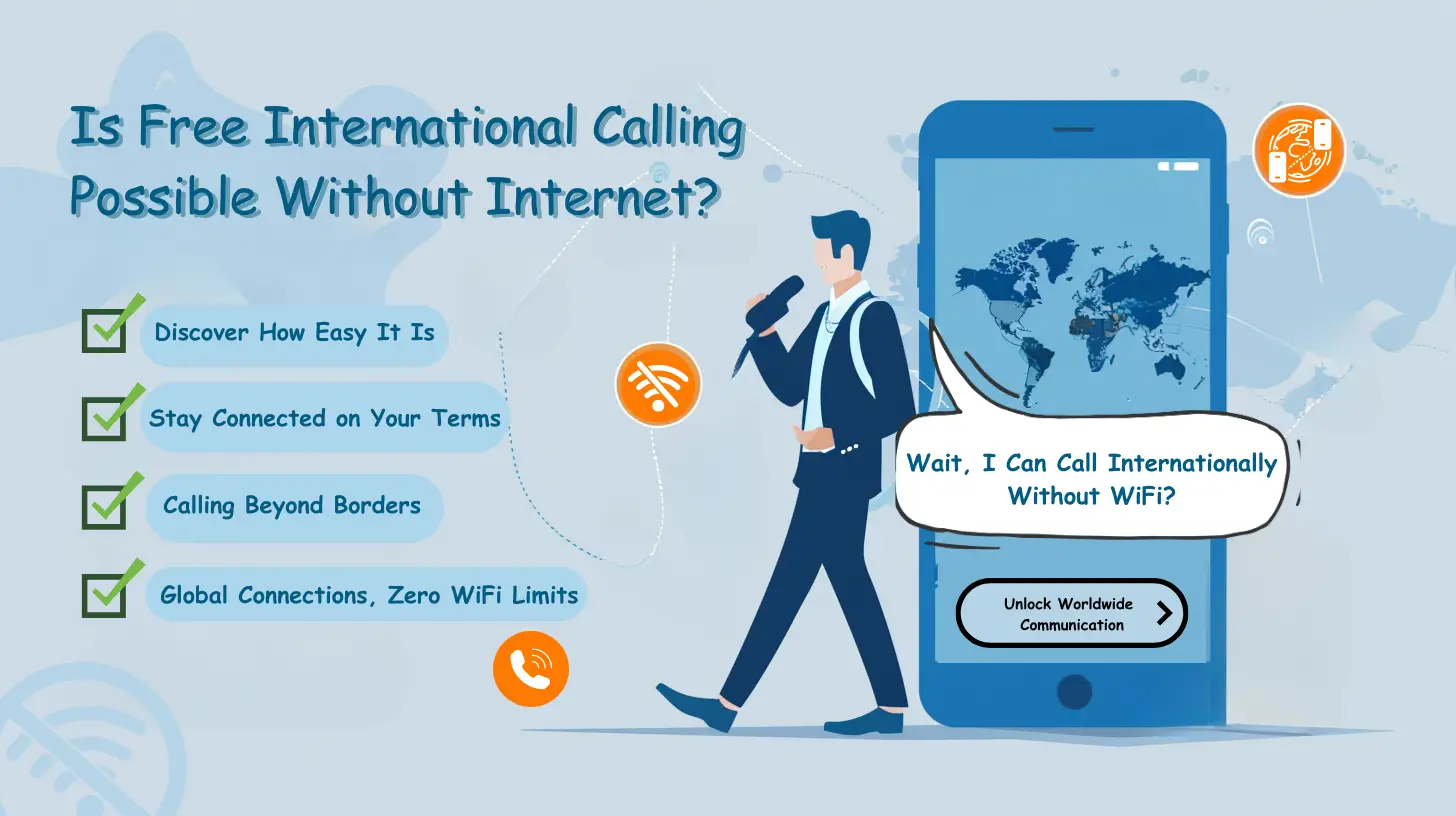Welcome to our in-depth exploration of the VoIP industry, where we’ll delve into the latest innovations and trends shaping the way we communicate. Join us at My Country Mobile, the industry leader, as we uncover the possibilities of voice-over IP technology.
My Country Mobile is a pioneer in the VoIP industry, offering innovative technologies and services for seamless communication. As the leading provider, My Country Mobile is dedicated to delivering cutting-edge solutions that empower businesses to thrive in the digital age.
With a wide range of offerings, including cloud contact centers, fintech services, AI-based chatbots, bulk SMS, SIP trunking, and international calling, My Country Mobile has established itself as a prominent player in retail and wholesale international voice and data services.
Our focus is on providing high-quality results and exceeding client expectations, ensuring that businesses can enhance their communication capabilities and gain market dominance through a robust digital infrastructure.
Wholesale VoIP service, offered by My Country Mobile, is a cost-effective solution that allows businesses to streamline their communication processes while enjoying the benefits of a secure and reliable network.
By leveraging wholesale VoIP minutes, businesses can access affordable call termination services and scalable solutions that can adapt to their evolving needs. This, in turn, enables them to expand their reach and enhance their customer experience.
The VoIP industry is experiencing significant growth, driven by the increasing demand for international calling services and the advancements in cloud-based communications and artificial intelligence.
However, with growth comes challenges. Wholesale VoIP providers need to address security concerns and combat fraudulent activities to ensure the protection of their customer’s data and communications.
At My Country Mobile, we are committed to providing secure and reliable communication services, implementing robust security measures to safeguard our customers’ information, and maintaining the trust they place in us.
As the industry evolves, My Country Mobile remains at the forefront, constantly innovating and exploring new possibilities in the VoIP space. Our dedication to driving innovation and delivering exceptional service sets us apart and establishes us as the go-to provider for businesses seeking cutting-edge communication solutions.
Key Takeaways:
- My Country Mobile is a pioneer in the VoIP industry, offering innovative technologies and services for seamless communication.
- Wholesale VoIP service is a cost-effective solution that allows businesses to enhance communication and gain market dominance through a digital infrastructure.
- Wholesale VoIP minutes play a crucial role in the global communication network, providing cost-effective call termination services and scalability for businesses.
- The VoIP industry is experiencing growth and innovation, with increasing demand for international calling services and advancements in cloud-based communications and artificial intelligence.
- Security concerns and fraudulent activities are challenges that wholesale VoIP providers need to address to protect their customers’ information and ensure reliable communication.
Stay tuned as we continue to uncover the latest trends and innovations in the VoIP industry, with a focus on the solutions and services offered by My Country Mobile. Together, let’s explore the future of communication!
The Evolution of Business Phone Systems
Over the years, business phone systems have undergone a significant transformation, moving away from traditional landlines towards cloud-based solutions such as cloud PBX and hosted VoIP. Let’s explore how these advancements are revolutionizing communication for businesses.
Cloud PBX, also known as cloud-based private branch exchange, is a virtual phone system that operates over the internet instead of relying on physical infrastructure. It offers a wide range of features and functionalities, including call routing, voicemail, and call forwarding. With cloud PBX, businesses can easily scale their communication needs without the limitations of on-premises equipment.
Hosted VoIP, on the other hand, provides businesses with a flexible and cost-effective phone system that leverages the power of the internet. Instead of purchasing and managing physical hardware, businesses can access their phone system through software applications on their computers or mobile devices. Hosted VoIP offers advanced features like unified communications, instant messaging, and video conferencing, enabling teams to collaborate seamlessly across locations.
The Benefits of Cloud PBX and Hosted VoIP
Both cloud PBX and hosted VoIP offer several advantages over traditional phone systems. Firstly, they provide businesses with greater flexibility and scalability, allowing them to add or remove phone lines as needed without the hassle of physical installations. Additionally, these solutions are more cost-effective, as they eliminate the need for expensive hardware and maintenance. Businesses can also benefit from enhanced mobility, with employees being able to access their phone systems from anywhere with an internet connection. Finally, cloud PBX and hosted VoIP offer advanced features and integrations that improve communication efficiency and productivity.
| Advantages of Cloud PBX | Advantages of Hosted VoIP |
|---|---|
| Scalability and flexibility | Cost savings |
| Advanced features like call routing and voicemail | Enhanced mobility |
| No hardware or maintenance costs | Improved collaboration through unified communications |

In today’s fast-paced business environment, seamless collaboration is essential for success. Unified communications, along with virtual phone systems, are empowering organizations to streamline communication channels and enhance collaboration like never before.
With unified communications, businesses can integrate various communication tools and platforms into a single, unified interface. This allows employees to access all communication channels, such as voice calls, instant messaging, video conferencing, and email, from a single platform, eliminating the need to switch between multiple applications or devices.
This streamlined approach not only saves time but also improves productivity. Employees can communicate and collaborate in real time, regardless of their physical location. Whether they are working remotely, traveling, or based in different office locations, unified communications ensure that everyone is connected and can easily share information, ideas, and updates.
By leveraging virtual phone systems, organizations can also enable seamless communication across various channels. Virtual phone systems, also known as cloud-based phone systems, utilize VoIP technology to route calls over the Internet. This eliminates the need for traditional phone lines and provides businesses with flexibility, scalability, and cost savings.
- Improved collaboration and teamwork.
- Increased productivity and efficiency.
- Real-time communication and instant feedback.
- Flexibility and mobility for remote workers.
- Cost savings by eliminating traditional phone lines.
By adopting unified communications and virtual phone systems, organizations can optimize their communication infrastructure, enhance collaboration, and gain a competitive edge in today’s digital landscape. My Country Mobile, as a leading provider in the VoIP industry, offers innovative unified communications solutions and virtual phone systems that empower businesses to streamline their communication channels and drive success.
| Unified Communications Features | Virtual Phone System Benefits |
|---|---|
| Integration of multiple communication channels. | Flexibility and scalability. |
| Real-time collaboration tools. | Cost savings on phone infrastructure. |
| Secure and reliable communication. | Mobility for remote work. |
| Improved customer service and satisfaction. | Centralized administration and management. |
SIP Trunking: The Backbone of VoIP Communication
Behind the scenes of the VoIP industry, SIP trunking plays a vital role in enabling seamless communication. As a leading VoIP service provider, we leverage SIP trunking to connect businesses and facilitate reliable, cost-effective communication solutions.

SIP trunking, or Session Initiation Protocol trunking, is a technology that allows businesses to make and receive phone calls over the Internet. It replaces traditional phone lines with a virtual system that is scalable and flexible. By utilizing SIP trunking, businesses can streamline their communication infrastructure, reduce costs, and enhance their overall productivity.
Benefits of SIP Trunking
- Cost Savings: By eliminating the need for physical phone lines, businesses can significantly reduce their monthly communication expenses. SIP trunking allows for unlimited calling plans, which can be especially beneficial for companies with high call volumes or international reach.
- Scalability: SIP trunking offers businesses the flexibility to scale their communication infrastructure up or down as needed. Whether it’s adding new phone lines or expanding to new locations, SIP trunking provides a seamless solution that can adapt to changing business needs.
- Reliability: SIP trunking ensures reliable communication by leveraging redundant networks and failover systems. This means that even in the event of network outages or hardware failures, businesses can continue to make and receive calls without interruption.
- Unified Communications: SIP trunking enables the integration of various communication channels, including voice, video, and messaging, into a unified platform. This enhances collaboration and allows employees to communicate more efficiently, regardless of their location.
At My Country Mobile, we understand the importance of SIP trunking in the VoIP industry. We provide businesses with reliable and cost-effective communication solutions, leveraging SIP trunking technology to connect them with their clients and partners worldwide. Whether it’s enhancing collaboration, reducing costs, or improving scalability, SIP trunking is the backbone of our VoIP services, enabling businesses to thrive in the digital era.
| SIP Trunking Services | Features |
|---|---|
| Secure and Reliable Connections | Redundant networks and failover systems ensure uninterrupted communication. |
| Flexible Scalability | Easily add or remove phone lines to accommodate business growth. |
| Cost-effective Solutions | Reduce communication expenses with unlimited calling plans and competitive rates. |
| Unified Communications | Integrate voice, video, and messaging into a single, cohesive platform. |
With SIP trunking as the foundation of our VoIP services, My Country Mobile is committed to delivering innovative and reliable communication solutions to businesses of all sizes. Through our cutting-edge technology and exceptional customer support, we strive to exceed client expectations and drive the industry forward.
As globalization continues to drive the need for international communication, the demand for reliable international calling services is on the rise. Wholesale VoIP service providers like us play a crucial role in meeting this demand by providing cost-effective and scalable solutions. With our advanced infrastructure and cutting-edge technologies, we enable businesses to connect with their international counterparts seamlessly.
By offering competitive rates and high-quality connections, we empower businesses to expand their reach and strengthen their global presence. Our wholesale VoIP services ensure crystal-clear voice calls and efficient call routing, resulting in improved communication and productivity for businesses across various industries.

With our extensive network and partnerships, we offer a wide range of international calling plans tailored to meet the unique needs of businesses. Whether it’s connecting with clients, partners, or remote teams, our services make international communication hassle-free and cost-effective.
| Benefits of Our Wholesale VoIP Services |
|---|
| 1. Cost-effective rates for international calls |
| 2. High-quality connections and call clarity |
| 3. Scalable solutions to accommodate growing business needs |
| 4. Efficient call routing for reliable communication |
| 5. Advanced features and flexibility |
Partnering with My Country Mobile for International Calling
At My Country Mobile, we understand the importance of seamless international communication for businesses. That’s why we offer a comprehensive suite of wholesale VoIP services, including international calling, SIP trunking, and virtual phone systems. With our reliable network and industry-leading technology, we provide businesses with the tools they need to stay connected and thrive in today’s global marketplace.
As the demand for international calling services continues to grow, our commitment to delivering exceptional customer experience remains unwavering. We pride ourselves on our exceptional customer service, ensuring that businesses receive the support they need at every step of their international communication journey.
With our innovative solutions and dedication to driving innovation in the VoIP industry, My Country Mobile is the trusted partner for businesses seeking reliable and cost-effective international calling services. Contact us today to learn more about how we can help your business thrive in the global marketplace.
Innovations in Cloud-Based Communications
Cloud-based communications have revolutionized the way businesses communicate, and innovative technologies like AI-based chatbots and cloud contact centers are leading the way. Let’s dive into these innovations that are reshaping the VoIP industry.
One of the most exciting advancements in cloud-based communications is the integration of artificial intelligence (AI) into business communication systems. AI-based chatbots are transforming customer interactions by providing quick and accurate responses to inquiries. These chatbots can handle routine customer queries, freeing up human agents to focus on more complex issues. With AI-powered chatbots, businesses can improve customer satisfaction while reducing response times and overall operational costs.

Another area of innovation in cloud-based communications is the development of cloud contact centers. Cloud contact centers provide businesses with an all-in-one solution for managing customer interactions. They offer features such as call routing, IVR (Interactive Voice Response), call recording, and real-time analytics. These advanced capabilities enable businesses to provide personalized customer experiences and optimize their customer service operations. With a cloud contact center, businesses can efficiently handle high call volumes and improve overall customer satisfaction.
The Role of AI in Cloud-Based Communications
Artificial intelligence has become a game-changer in the VoIP industry, enhancing the functionality and efficiency of cloud-based communications. AI-powered technologies enable businesses to automate various processes, reduce manual intervention, and improve overall productivity. Machine learning algorithms can analyze customer data and provide personalized recommendations, ensuring that businesses deliver relevant and targeted communication to their customers.
Furthermore, AI can enhance call quality and reliability by leveraging real-time analytics and predictive maintenance. By analyzing call data, AI algorithms can identify potential network issues and proactively address them, ensuring uninterrupted communication. This proactive approach helps businesses maintain high-quality voice and video calls, leading to improved customer satisfaction and increased efficiency.
| Benefits of AI in Cloud-Based Communications |
|---|
| 1. Improved customer service through AI-based chatbots |
| 2. Increased productivity with automated processes |
| 3. Enhanced call quality and reliability |
| 4. Personalized customer experiences through data analysis |
In conclusion, the introduction of innovative technologies like AI-based chatbots and cloud contact centers has transformed cloud-based communications in the VoIP industry. These innovations enable businesses to enhance customer service, improve productivity, and deliver highly personalized communication experiences. As the VoIP industry continues to evolve, My Country Mobile remains at the forefront, providing cutting-edge solutions that empower businesses to thrive in this digital era.
Ensuring Security in the VoIP Industry
While the VoIP industry continues to thrive, it’s not without its security challenges. Addressing concerns such as fraudulent activities is crucial for wholesale VoIP providers to ensure the security and trust of their customers. As a leader in the industry, My Country Mobile understands the importance of implementing robust security measures to protect their clients’ communication.

One of the main security concerns in the VoIP industry is the rise of fraudulent activities, including unauthorized access, call hijacking, and toll fraud. These activities not only result in financial losses for businesses but also compromise the integrity and privacy of their communication. Wholesale VoIP providers like My Country Mobile employ advanced fraud detection and prevention mechanisms to identify and mitigate these risks.
Through real-time monitoring and analysis of call traffic patterns, suspicious activities can be detected and blocked. Additionally, authentication and encryption protocols are implemented to secure communication channels and prevent unauthorized access. By prioritizing security, My Country Mobile ensures that its clients can rely on their services for safe and confidential communication.
| Security Measures | Benefits |
|---|---|
| Real-time monitoring and analysis | Identifies and blocks suspicious activities |
| Authentication and encryption protocols | Secures communication channels |
| Fraud detection and prevention mechanisms | Mitigates risks and ensures customer trust |
With the rapid growth of the VoIP industry and the increasing reliance on digital communication, it is essential for wholesale VoIP providers to prioritize security. By partnering with My Country Mobile, businesses can benefit from a secure and trustworthy communication infrastructure, enabling them to focus on their core operations without compromising the confidentiality and integrity of their communication.
The Growing VoIP Market and My Country Mobile’s Role
The VoIP market is experiencing rapid growth, driven by the increased demand for innovative communication solutions. At My Country Mobile, we have established ourselves as a prominent player in retail and wholesale international voice and data services, delivering exceptional results and exceeding our clients’ expectations. With our cutting-edge technologies and comprehensive solutions, we continue to lead the way in driving the evolution of the VoIP industry.
As businesses worldwide recognize the advantages of VoIP, the wholesale VoIP market is expanding at a remarkable rate. Our expertise in providing retail and wholesale international voice and data services has enabled us to capture a significant share of this growing market. We offer a wide range of solutions, including cloud contact centers, fintech services, AI-based chatbots, bulk SMS, SIP trunking, and international calling.
Our commitment to delivering high-quality results has earned us a reputation as a trusted partner for businesses seeking reliable communication solutions. We understand the unique needs and challenges that businesses face, and we tailor our services to meet their specific requirements. Whether it’s enhancing collaboration through unified communications or ensuring secure and cost-effective communication through SIP trunking, we have the expertise to drive success for our clients.
As the demand for international calling services continues to rise, we provide wholesale VoIP services that enable businesses to connect with their global partners seamlessly. Our extensive network ensures reliable and efficient call termination services, allowing businesses to expand their reach and gain market dominance. By leveraging the power of our digital infrastructure, businesses can achieve cost savings and scalability, giving them a competitive edge in today’s dynamic business landscape.
| Advantages of My Country Mobile’s Wholesale VoIP Services | Benefits for Businesses |
|---|---|
| Cost-effective call termination services | Reduced communication expenses |
| Reliable and efficient global connectivity | Enhanced global reach |
| Scalable solutions for business growth | Flexibility and adaptability |
| Advanced security measures | Protection against fraudulent activities |
Conclusion
With the VoIP industry experiencing rapid growth and innovation, My Country Mobile remains at the forefront as a leading provider of retail and wholesale international voice and data services. Our comprehensive range of solutions, advanced technologies, and commitment to delivering exceptional results make us the partner of choice for businesses seeking reliable and innovative communication solutions. As we continue to drive the evolution of the VoIP industry, we remain dedicated to exceeding our client’s expectations and shaping the future of seamless communication.
Wholesale VoIP minutes are the lifeblood of the global communication network, offering cost-effective call termination services for businesses. Let’s explore the significance of these minutes and how they contribute to seamless communication.
As businesses expand their operations globally, the need for reliable and affordable call termination services becomes paramount. Wholesale VoIP minutes provided by My Country Mobile play a crucial role in enabling businesses to connect with customers worldwide. These minutes allow for efficient call routing and termination, ensuring that conversations are crystal clear and uninterrupted.
One of the key benefits of wholesale VoIP minutes is their cost-effectiveness. By leveraging a wholesale VoIP service provider like My Country Mobile, businesses can access competitive rates and enjoy significant savings on their communication expenses. This enables them to allocate resources more efficiently and invest in other areas of their operations.
| Benefits of Wholesale VoIP Minutes |
|---|
| 1. Cost savings: Wholesale VoIP minutes offer competitive rates, reducing communication costs for businesses. |
| 2. Scalability: Businesses can easily scale their communication infrastructure as their needs evolve, thanks to the flexibility of wholesale VoIP services. |
| 3. Reliability: Wholesale VoIP providers like My Country Mobile ensure high call quality and uptime, minimizing disruptions in communication. |
| 4. Global connectivity: Wholesale VoIP minutes enable businesses to connect with customers across borders, expanding their market reach. |
In conclusion, wholesale VoIP minutes are a valuable asset for businesses looking to enhance their communication capabilities. They provide cost-effective call termination services, ensuring seamless connectivity across the global network. My Country Mobile, as a leading wholesale VoIP service provider, offers innovative solutions and a reliable infrastructure to meet the communication needs of businesses worldwide.
As we conclude our exploration of the VoIP industry, it’s evident that communication is at the heart of innovation and trends. My Country Mobile remains at the forefront, driving advancements and reshaping the industry with innovative solutions for seamless communication.
With a focus on delivering high-quality results and exceeding client expectations, My Country Mobile has established itself as a pioneer in the VoIP industry. Through cutting-edge technologies and services such as cloud contact centers, fintech solutions, AI-based chatbots, bulk SMS, SIP trunking, and international calling, they enable businesses to enhance their communication capabilities and gain a competitive edge in the market.
Wholesale VoIP service is a key component of their offerings, providing businesses with a cost-effective solution to establish a digital infrastructure and expand their reach. Wholesale VoIP minutes play a crucial role in the global communication network, offering scalable and affordable call termination services for businesses of all sizes.
The VoIP industry is experiencing significant growth, largely driven by the increasing demand for international calling services and the advancements in cloud-based communications and artificial intelligence. However, with growth comes challenges, and the industry must address security concerns and fraudulent activities to protect its customers.
Overall, My Country Mobile’s commitment to innovation and delivering cutting-edge solutions, combined with their expertise in retail and wholesale international voice and data services, positions them as a key player in the VoIP industry. As communication continues to evolve and shape various industries, My Country Mobile remains dedicated to driving advancements and enabling seamless communication for businesses around the world.


























